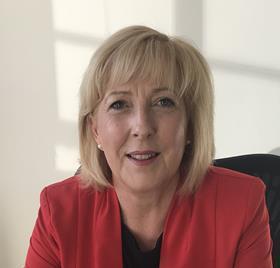
Responsible investment should be at the core of the relationship between asset owners and investment managers. More and more clients want it, regulators demand it and academic and industry evidence supports it. This is the starting point that explains why our work on selection, appointment and monitoring (SAM) is so crucial. These guides are designed specifically for PRI’s 550+ asset owner signatories as well as the broader asset owner community. We hope they will support large and small asset owners and their advisers to incorporate ESG factors into how they relate to, co-operate with and challenge asset managers.
Discussions around the integration of ESG issues and selection, appointment and monitoring have changed materially since PRI was founded in 2006. They are no longer a nice to-have. Leading asset owners are starting to introduce activities such as minimum standards for shortlisting, incorporating clauses in contractual documentation and threatening to terminate relationships due to materialising ESG issues. Asset managers now expect these types of requirements– they are no longer an outlier.
In 2019, PRI’s Leaders’ Group included global asset owners at the forefront of these activities. Practices which are common across this group include a thorough and systematic selection process, the inclusion of clear and specific demands in contractual agreements and a rigorous follow up procedure. These guides draw on practices from the Leaders’ Group as well as feedback from a series of workshops held during the year - to build a picture of leading practice and initiatives in the selection, appointment and monitoring of managers. Leading practices are not just limited to a small number of large asset owners. Our Asia Pacific panel discussion on SAM can be viewed here. It serves as a reminder that, though there may be regional differences, these practices are now global.
These guides provide three key elements for asset owners. The selection guide outlines attributes of leading approaches when selecting asset managers. The appointment guide includes 12 clauses that can be used by asset managers when writing and agreeing contractual arrangements. And finally, the monitoring guide includes a set of questions or disclosures that can be used by asset owners during the regular monitoring process.
This programme of work does not stop here. Our SAM guides will be followed by introductory guides covering the topics. The suite of introductory guides on various topics have proved popular as a starting point to discover PRI’s work. We will also be working on mandate design and are interested to hear from asset owners who have started to design mandates which incorporate ESG factors.
Encouraging, supporting and collaborating with asset owners is fundamental to PRI’s theory of change as this group of signatories play a key role in influencing the entire investment manager industry. This segment of industry, along with their advisers, must be empowered to challenge investment managers on practice, to uncover greenwashing and to really trigger changes in practice across integration and engagement.
I would like to thank all the signatories who contributed to these guides and have been involved in our broader asset owner programme. I hope the guides will contribute to the industry’s technical understanding of responsible investment and empower asset owners around the world when evaluating investment managers.
Fiona Reynolds, CEO PRI







